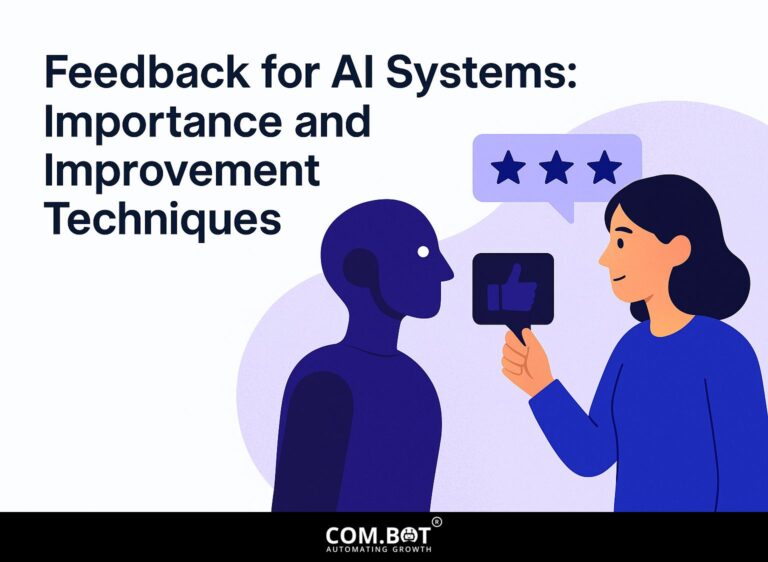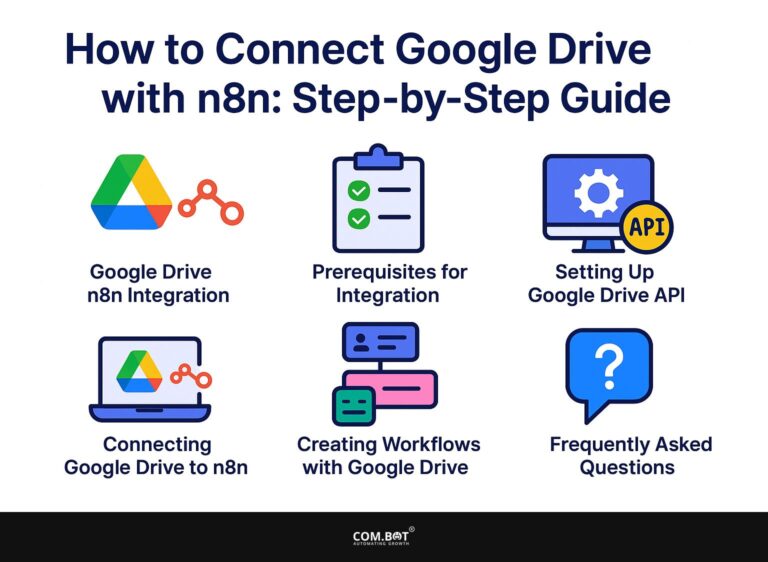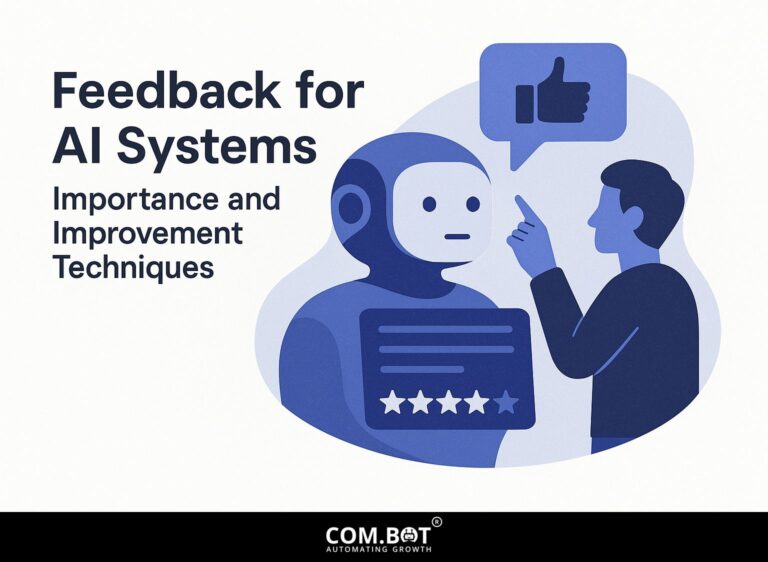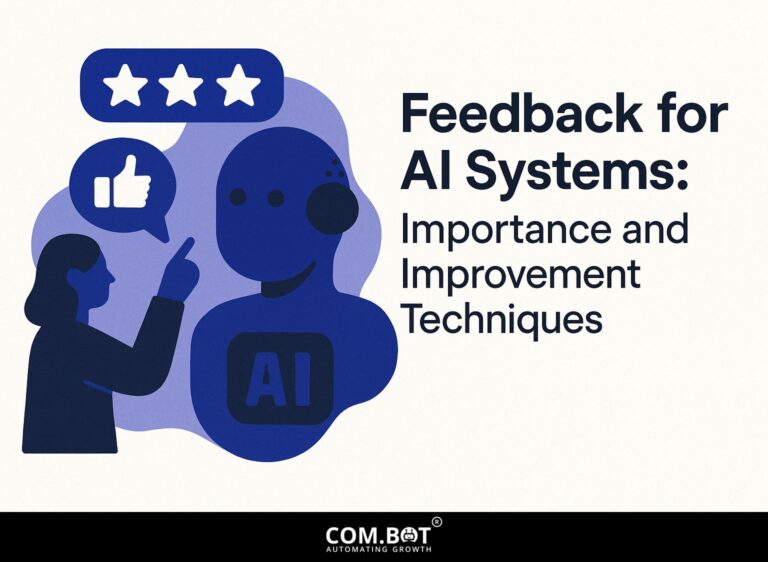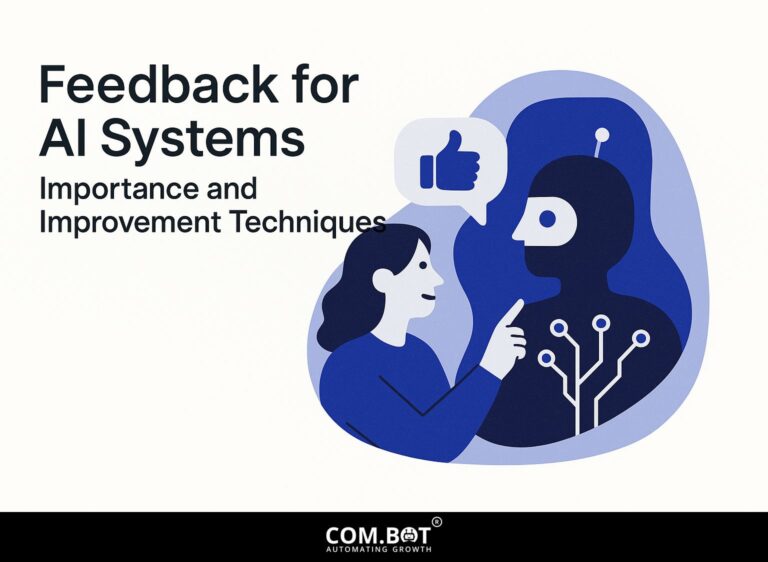Feedback for AI Systems: Importance and Improvement Techniques
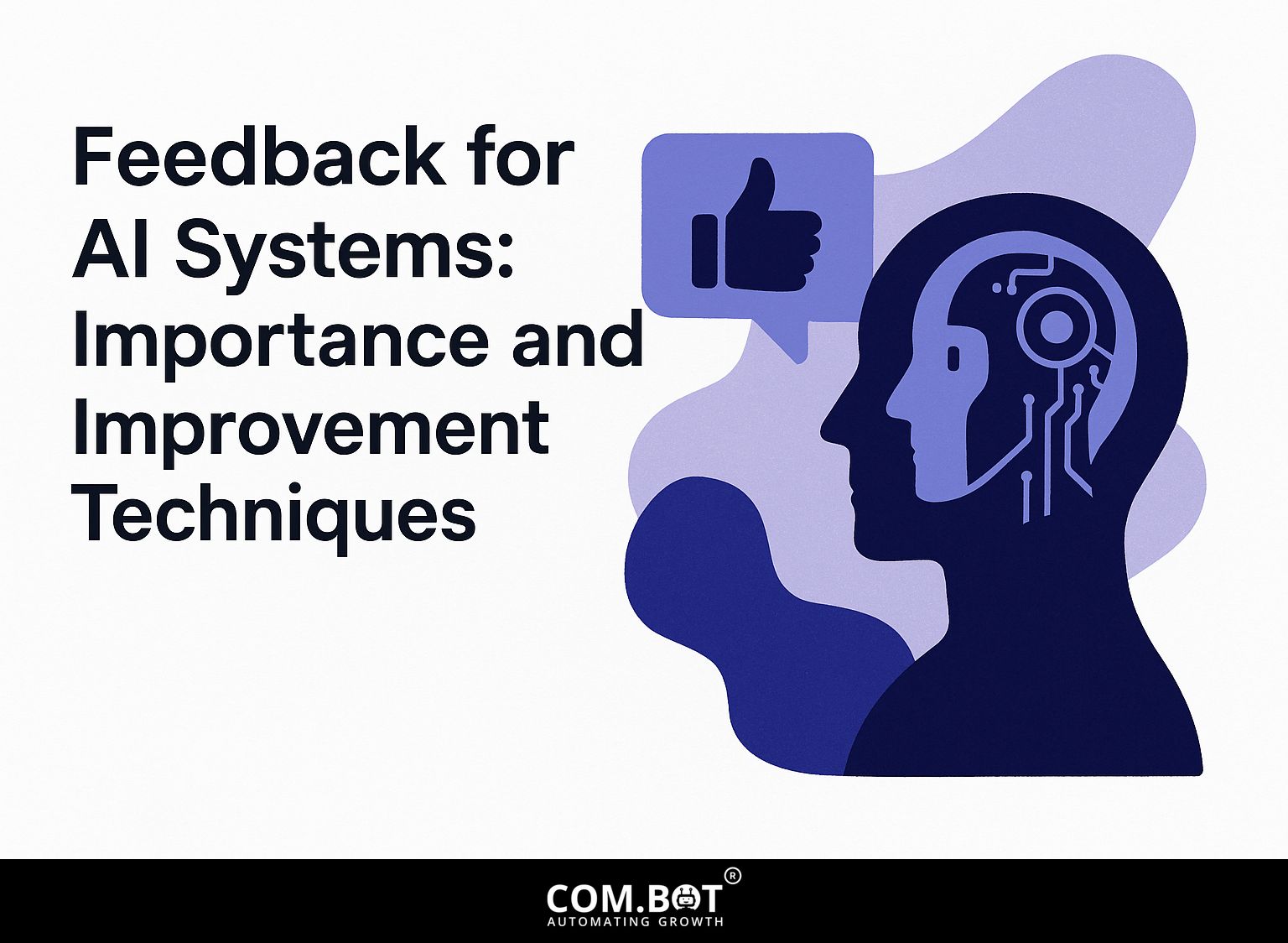
- 1 Introduction to AI Feedback Systems
- 2 The Importance of Feedback in AI Development
- 3 AI Feedback Improvement Data
- 4 Types of Feedback for AI Systems
- 5 Techniques for Collecting Feedback
- 6 Analyzing Feedback Data
- 7 Implementing Feedback for Improvement
- 8 Challenges in Feedback Collection
- 9 Future Trends in AI Feedback Systems
- 10 Frequently Asked Questions
- 10.1 What is the importance of feedback for AI systems?
- 10.2 How does feedback improve AI systems?
- 10.3 Can human feedback be added to AI systems?
- 10.4 What are some techniques for providing feedback to AI systems?
- 10.5 Why is it important to have a reliable feedback loop for AI systems?
- 10.6 What are the potential consequences of not incorporating feedback in AI systems?
Introduction to AI Feedback Systems
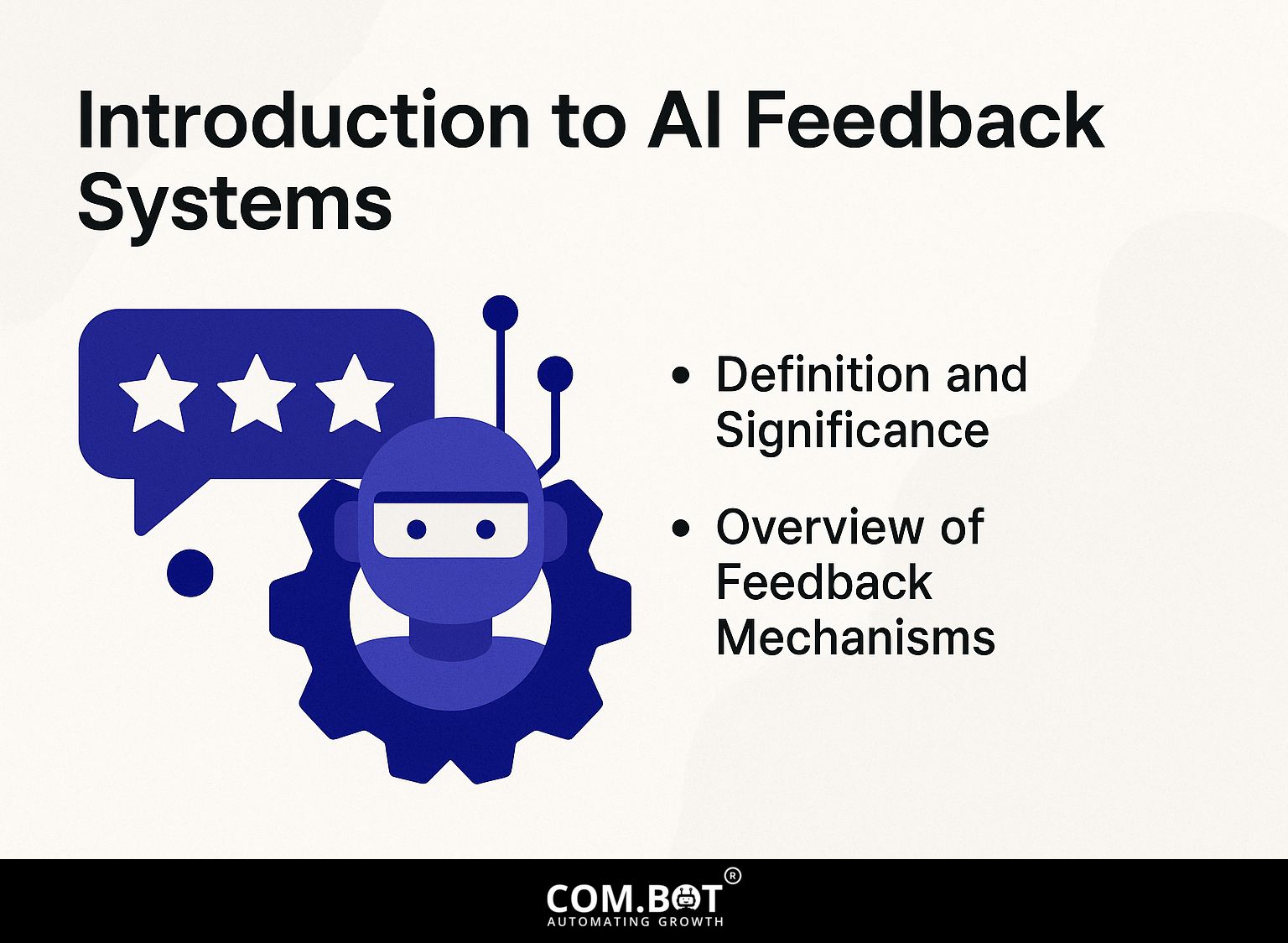
In a world where Artificial Intelligence and machine learning are revolutionizing industries, human feedback is essential for refining AI systems. Using reinforcement learning and tools such as Label Studio improves model accuracy and user confidence. This article looks at the importance of feedback in AI development, discussing ways to gather and examine it effectively. Learn how using user feedback can lead to progress and influence the development of AI technology.
Key Takeaways:
Definition and Significance
An AI feedback system is a structured method to gather user opinions to help make AI models function more effectively.
A good feedback system has many key components. First, user interactions are monitored to identify pain points and areas needing improvement.
For example, OpenAI gathers information through direct surveys and feedback systems to learn how people interact with their models. A/B testing identifies which model versions are most effective for users and guides the development of new versions.
Collecting and analyzing feedback regularly helps improve the accuracy of AI systems and enhances the user experience.
Overview of Feedback Mechanisms
Feedback systems can include many types like user surveys, automatic responses, and performance measures that monitor how well the system works.
These mechanisms are important for ongoing advancement of AI systems. For example, user surveys can collect detailed feedback directly from users, allowing developers to better grasp the user experience.
Feedback loops in systems, similar to those in reinforcement learning, allow them to modify themselves using current performance information. Tools like Label Studio help with data annotation by providing structured feedback, which improves model training.
By incorporating these feedback types, AI systems can evolve rapidly, improving their effectiveness in addressing user needs.
The Importance of Feedback in AI Development
Receiving feedback is crucial for improving AI, affecting its accuracy, user trust, and overall performance. Worth exploring: Feedback for AI Systems: Importance and Improvement Techniques
Enhancing Accuracy and Performance
Regular feedback can improve AI accuracy by up to 30%, as it allows for adjustments to algorithms based on actual user interactions.
For example, platforms like Amazon use customer feedback on product recommendations to improve their algorithms. By analyzing user ratings and comments, they adjust their predictive models, resulting in more relevant suggestions over time.
Google’s search engine uses data on how users interact, like how often people click on links, to make search results more relevant. These methods highlight the need for regular feedback in AI development. They allow for early idea testing and increase accuracy by using clear, data-driven information.
AI Feedback Improvement Data
AI Feedback Improvement Data
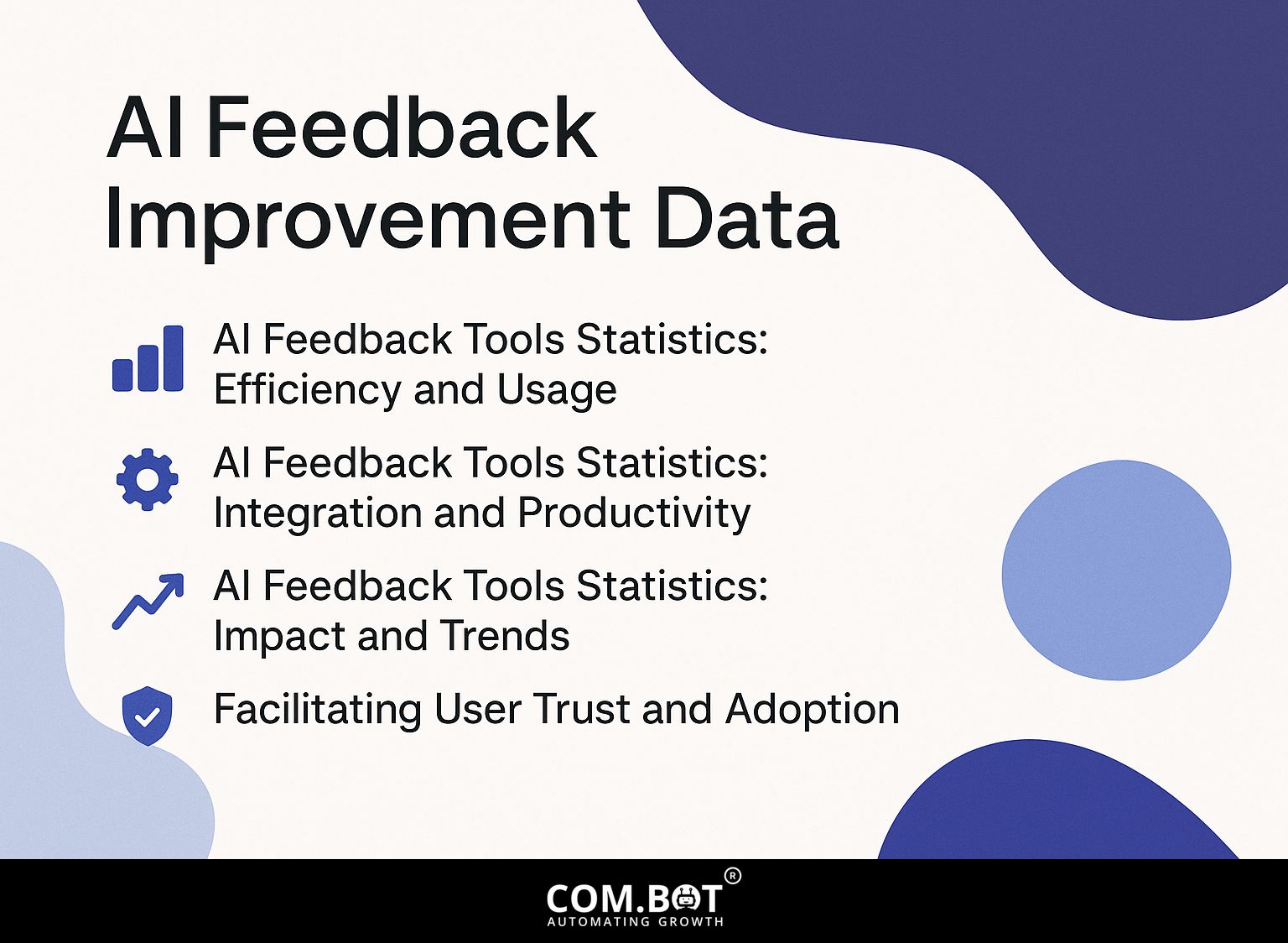
AI Feedback Tools Statistics: Efficiency and Usage
AI Feedback Tools Statistics: Integration and Productivity
AI Feedback Tools Statistics: Impact and Trends
AI Feedback Improvement Data offers a detailed look at how effective AI feedback tools are, how people use them, how they work with other systems, how they affect productivity, and what current trends are. This data demonstrates how AI enhances feedback systems, speeding up processes and making them more accurate and effective.
AI Feedback Tools Statistics show significant improvements in efficiency and usage. For instance, AI feedback tools are 10% faster than traditional methods, showcasing the significant time savings and speed advantages they bring. The survey completion rates with pre-fill technology stand at 43%, indicating that pre-filled surveys are more user-friendly and likely to be completed. Furthermore, 51% of UX researchers use AI tools, demonstrating the growing reliance on AI for usability testing and feedback collection. Additionally, the accuracy of multilingual processing is an impressive 90%, making AI tools highly effective in various language settings.
In terms of Integration and Productivity, AI feedback tools save substantial time. Annually, individuals save $21,000 worth of time, which translates to significant productivity gains. Monthly, the use of AI reduces 26 meetings, allowing teams to focus on more critical tasks. Operational tasks are reduced by 40% Highlighting how AI makes daily tasks run smoothly. The monthly pricing for these tools varies, with BuildBetter.ai costing $200 and Zonka Feedback $49, reflecting different functionalities and target markets.
Impact and Trends Information shows that AI feedback tools significantly improve review processes. Theme detection technology reduces review time by 80% making it easier to understand feedback quickly. The number of people who continue their subscriptions for AI feedback tools is very high at 98%, suggesting high satisfaction and perceived value among users.
Overall, the AI Feedback Improvement Data shows how AI tools are changing the way feedback is gathered and handled. They improve speed, accuracy, and user engagement while significantly enhancing productivity and reducing operational burdens. The shorter review times and high retention rates show how well these tools work and how dependable they are. As AI continues to evolve, its role in feedback improvement is likely to expand, offering even more advanced capabilities and efficiencies.
Facilitating User Trust and Adoption
When companies actively gather and use user feedback, trust in AI systems can grow by 40%.
To make the best use of user feedback, organizations can use surveys, focus groups, and usability testing.
For example, after adding a new feature, a company might use tools like SurveyMonkey to collect feedback on user experience.
Research shows that companies that include user feedback in developing products increase user satisfaction and have more people using their products. For example, a technology company saw a 25% rise in user participation after updating their product based on feedback.
When organizations focus on user feedback, they create trust and build a community around their AI solutions.
Types of Feedback for AI Systems
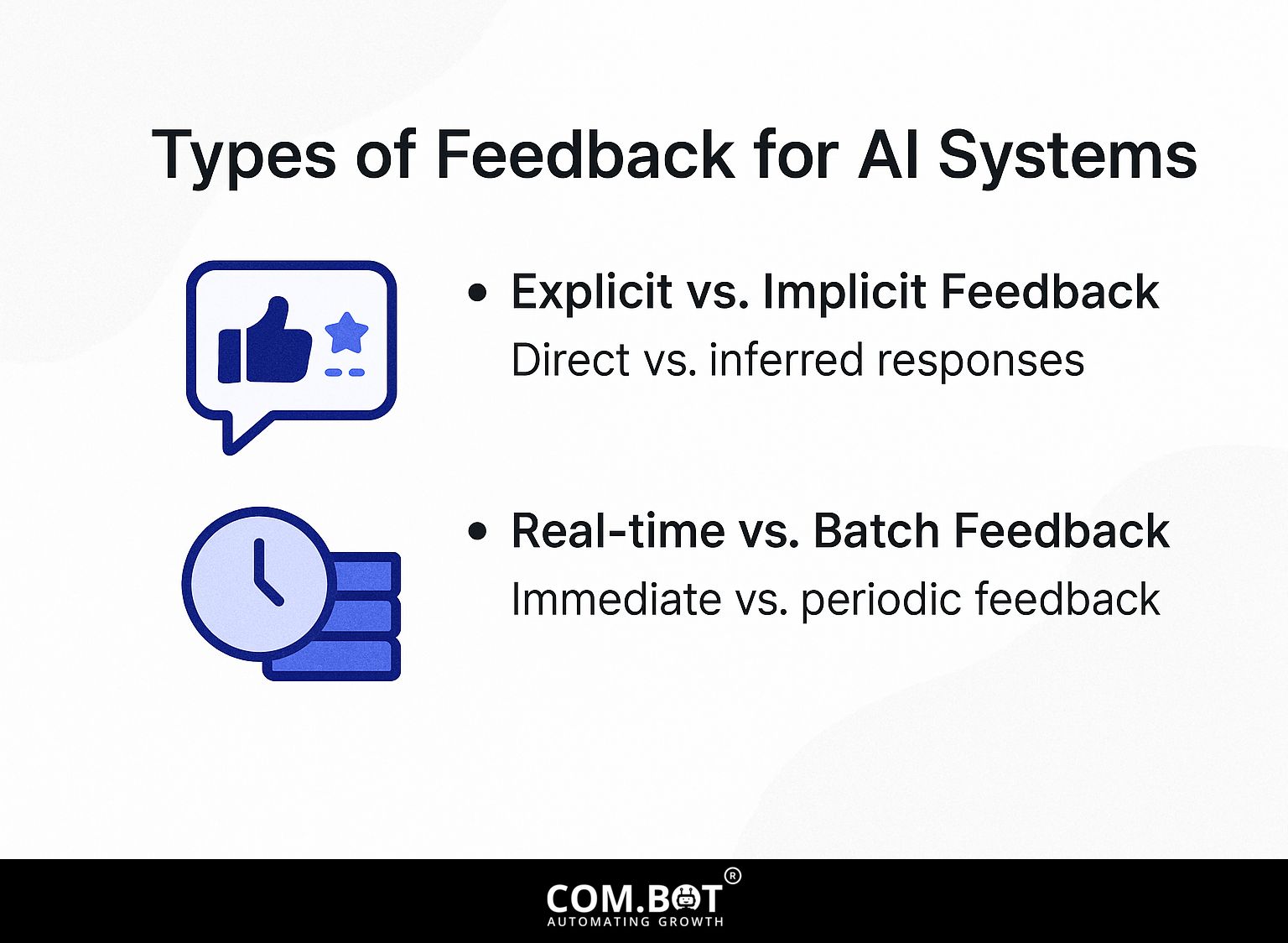
Knowing the types of feedback for AI systems is important for creating good data collection methods.
Explicit vs. Implicit Feedback
Explicit feedback involves direct user input, such as ratings, while implicit feedback is derived from user behavior, like click patterns.
It’s easy to gather clear feedback; for example, an app might ask users to rate their experience after they try a feature. This direct input helps improve specific areas like usability.
Implicit feedback uses user interactions like time on pages or engagement levels to gather information without needing users to do anything. AI systems such as Netflix use both methods effectively: clear ratings improve content suggestions, while data from viewing habits help recommend new shows or movies.
Using these methods together creates a better user experience and increases overall happiness.
Real-time vs. Batch Feedback
Real-time feedback gives quick information, while batch feedback collects data for regular reviews, each meeting different AI requirements.
Tools like Google Analytics and Hotjar provide immediate feedback, allowing you to monitor user behavior and quickly make changes to your campaigns or content. For instance, Google Analytics can show live traffic data, helping identify peak engagement moments.
In contrast, batch feedback tools, like Tableau or Google Data Studio, excel at analyzing trends over time, providing reports that summarize performance monthly or quarterly. This lets companies check long-term plans by looking at past data and trends, so it’s important to use both methods for thorough user analysis.
Techniques for Collecting Feedback

Using good methods to gather feedback is key to getting helpful information that leads to better AI. If interested, explore effective strategies in our comprehensive guide on feedback improvement techniques for AI systems.
User Surveys and Interviews
Surveys done through tools like SurveyMonkey can achieve a 20% response rate, collecting detailed opinions directly from users.
To make useful user surveys, begin by writing clear and short questions that are free from technical terms and lead to practical results. For instance, use a mix of open-ended questions and multiple-choice formats to gather diverse feedback.
Next, distribute your survey through email campaigns or social media to reach your audience. Tools like Google Forms and Typeform also provide user-friendly interfaces for easy survey creation.
Analyze the collected data by looking for recurring themes or suggestions, which can inform product improvements or service adjustments.
Automated Feedback Loops
Automated feedback systems use algorithms to continuously collect user data, making them work better without user input.
These loops are important in AI systems such as recommendation engines or chatbots, where user interactions improve ongoing performance.
For example, Netflix changes what it recommends by looking at what you watch, using data instantly to make the service better for you.
Tools like Zapier can connect different applications to automatically handle feedback, such as sending emails when there are changes in user behavior.
By regularly gathering and studying data, businesses can act in advance, leading to services that better match individual needs and higher user satisfaction.
Analyzing Feedback Data
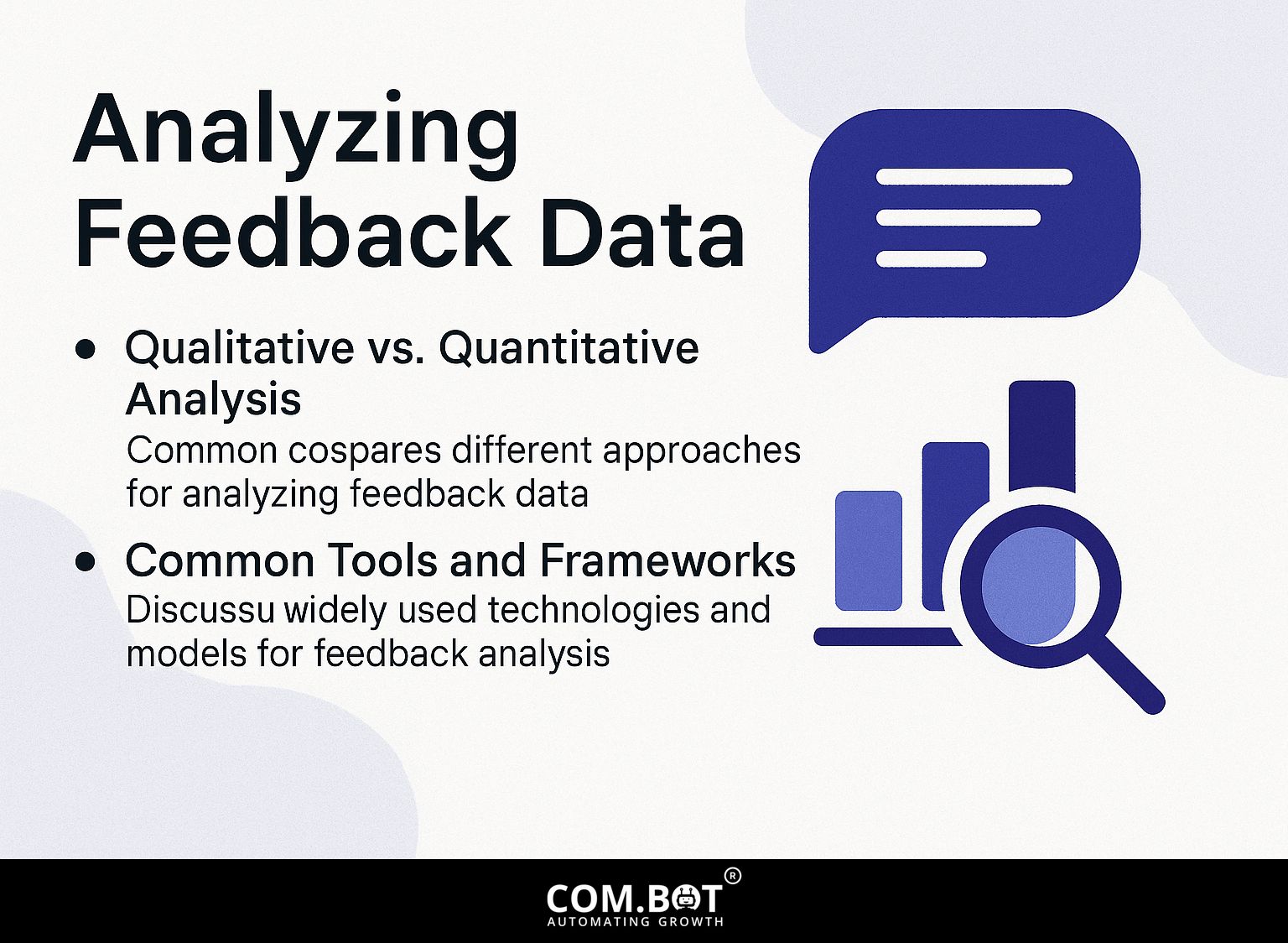
Reviewing feedback data is important for identifying helpful details that inform AI model updates and decisions.
Qualitative vs. Quantitative Analysis
Qualitative analysis looks at user feelings, and quantitative analysis deals with data that can be measured. Both are important for AI to work well.
For effective qualitative analysis, you might use programs like NVivo or Dedoose to code feedback from surveys or interviews.
For quantitative analysis, R is an excellent choice; it allows for statistical modeling and visualization of numerical data. For instance, you can analyze customer satisfaction scores by compiling data in R and using packages like ggplot2 for visual representation.
By using both methods, you get a full grasp of user feedback, which helps you make AI improvements that really engage your audience.
Common Tools and Frameworks
Programs like Tableau and Google Data Studio present feedback data clearly, simplifying decision-making.
To analyze feedback data well, try tools like Qualtrics. It offers strong survey features with instant data analysis and dashboards you can change to fit your needs.
SurveyMonkey is a great option because it is user-friendly and offers a large collection of templates, which makes it suitable for any size of business.
Look for features such as sentiment analysis in tools like HubSpot, which can help identify customer emotions behind feedback.
These tools work together to examine data, helping understand customer preferences and improve their satisfaction.
Implementing Feedback for Improvement
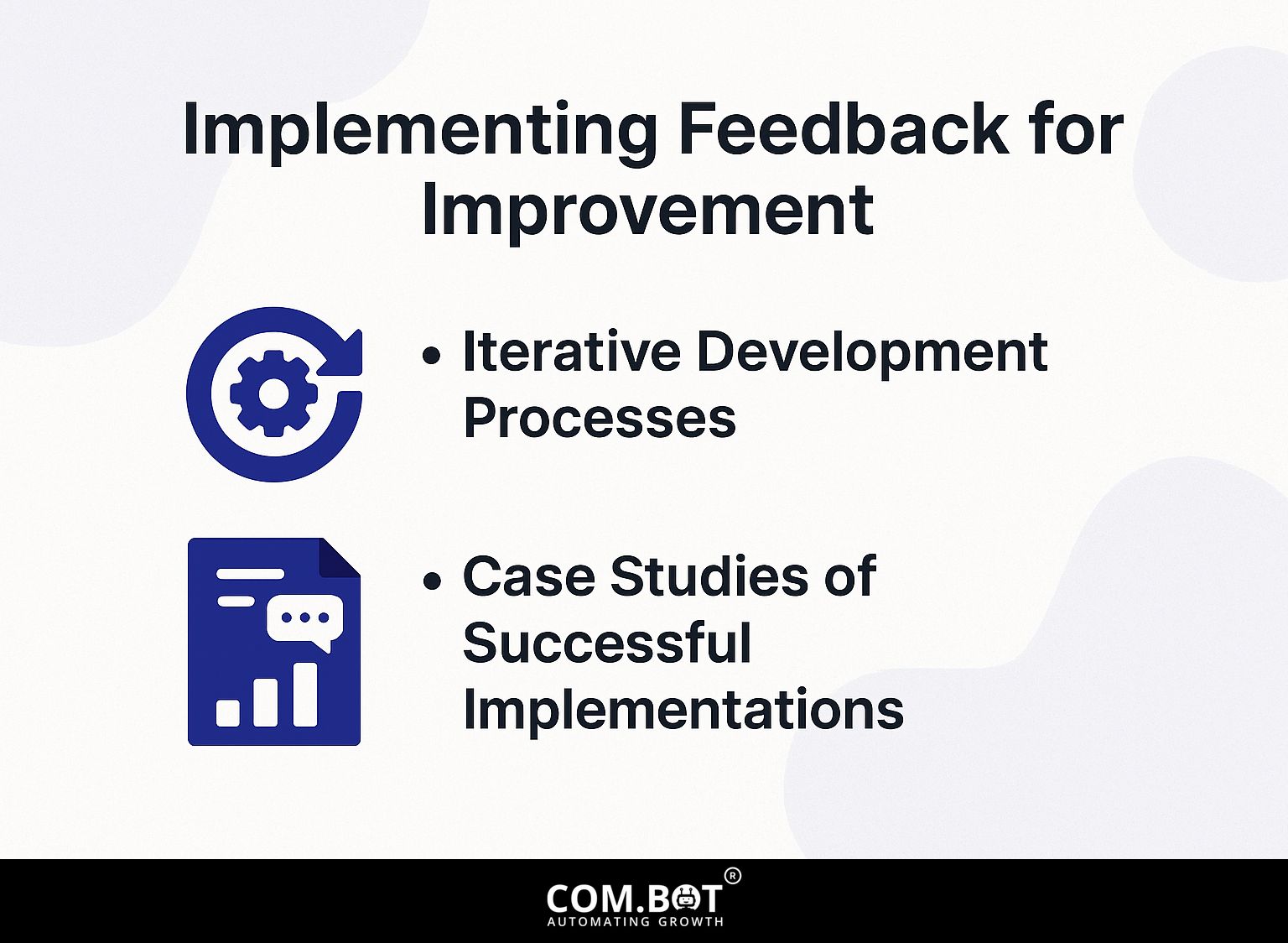
Using feedback effectively is key to making AI systems work better and enhancing user experience with them.
Iterative Development Processes
Using repeated development methods like Agile can greatly improve how AI systems react to user comments.
Agile focuses on short development cycles, known as sprints, where teams work on small, defined tasks. For instance, an AI project might involve developing a chatbot.
In the first sprint, the team can work on basic talking features. After collecting user feedback, they can focus on improvements, such as adding support for different languages or connecting with other platforms.
This method helps teams quickly handle changes, making sure the final product meets user needs and expectations.
Case Studies of Successful Implementations
Examples show how companies like Amazon use user feedback to improve AI and increase overall performance.
For instance, Amazon’s Voice of the Customer program collects reviews, ratings, and direct feedback to improve its Alexa AI. By implementing sentiment analysis, they quickly identify features users love or dislike and prioritize improvements accordingly.
A notable outcome includes a 30% increase in positive interactions after adding requested features like multi-user support. Netflix examines user behavior on its platform to improve its recommendation system, resulting in a 15% increase in viewership for personalized choices.
These examples highlight the effectiveness of actively integrating user feedback into AI development cycles.
Challenges in Feedback Collection
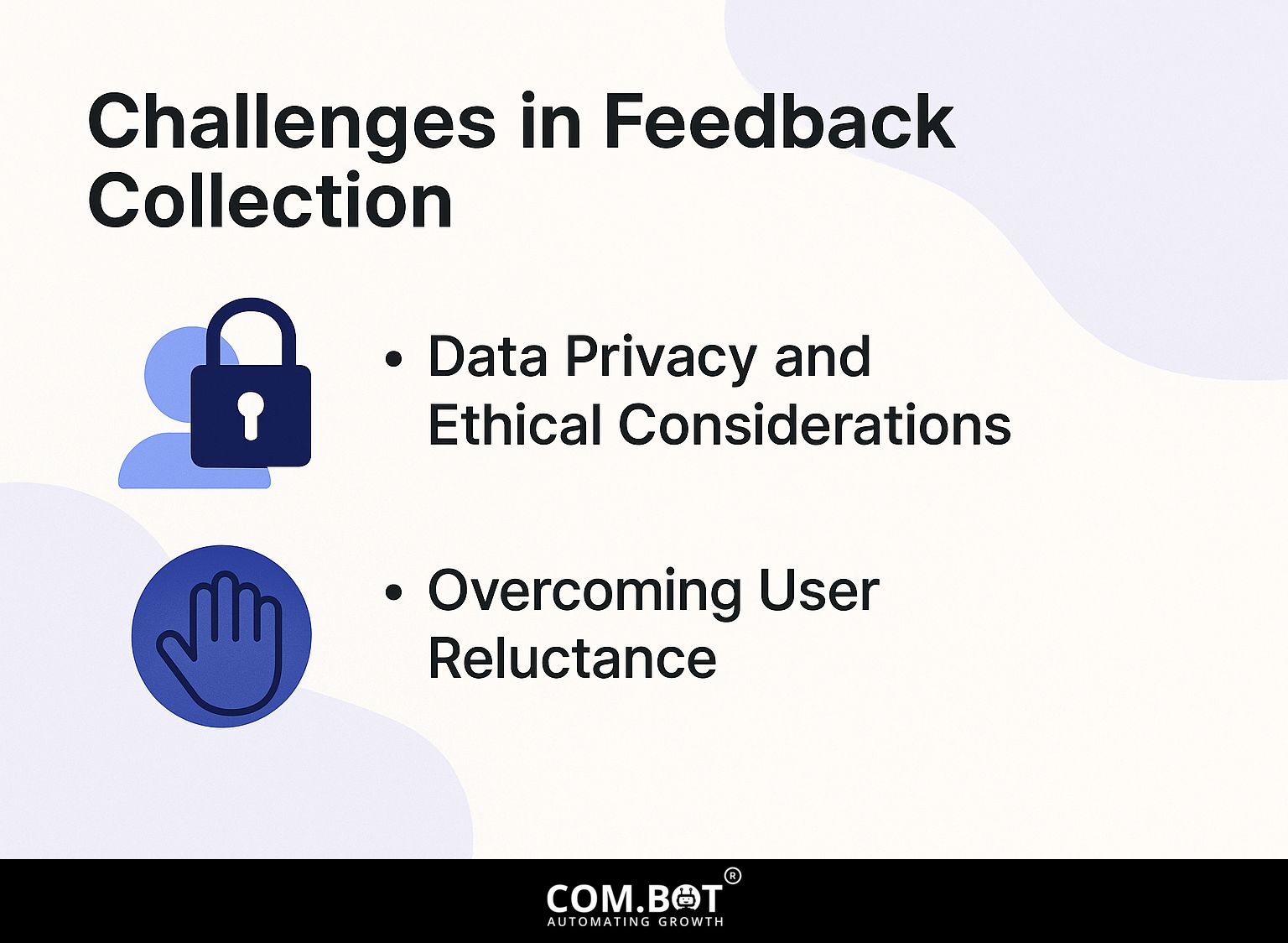
Even though it’s important, gathering feedback has many difficulties that organizations need to handle to improve their AI systems.
Data Privacy and Ethical Considerations
Organizations must follow data privacy laws, like GDPR, and consider ethics when gathering user feedback.
To comply effectively, organizations should implement a transparent feedback process. Start by informing users why their data is being collected and how it will be used.
Use consent management tools, such as OneTrust or ConsentManager, to monitor permissions. It’s important to remove personal information from data to keep people’s identities safe.
Regularly checking how you gather feedback can help you follow privacy rules. Letting users decide to quit at any time builds trust and shows commitment to ethical standards.
Overcoming User Reluctance
User reluctance to provide feedback can be reduced by implementing transparent processes and demonstrating the benefits of participation.
It’s important to set up clear ways to communicate. Have regular meetings to show how feedback will affect decisions, helping participants feel appreciated.
Offer small incentives to encourage users to take surveys or share useful information. Gift cards or public acknowledgment can encourage participation.
Showcase success stories where feedback led to positive changes, reinforcing the impact of their contributions.
For example, if user feedback improved a feature in your product, share these results across your platforms to encourage ongoing participation.
Future Trends in AI Feedback Systems
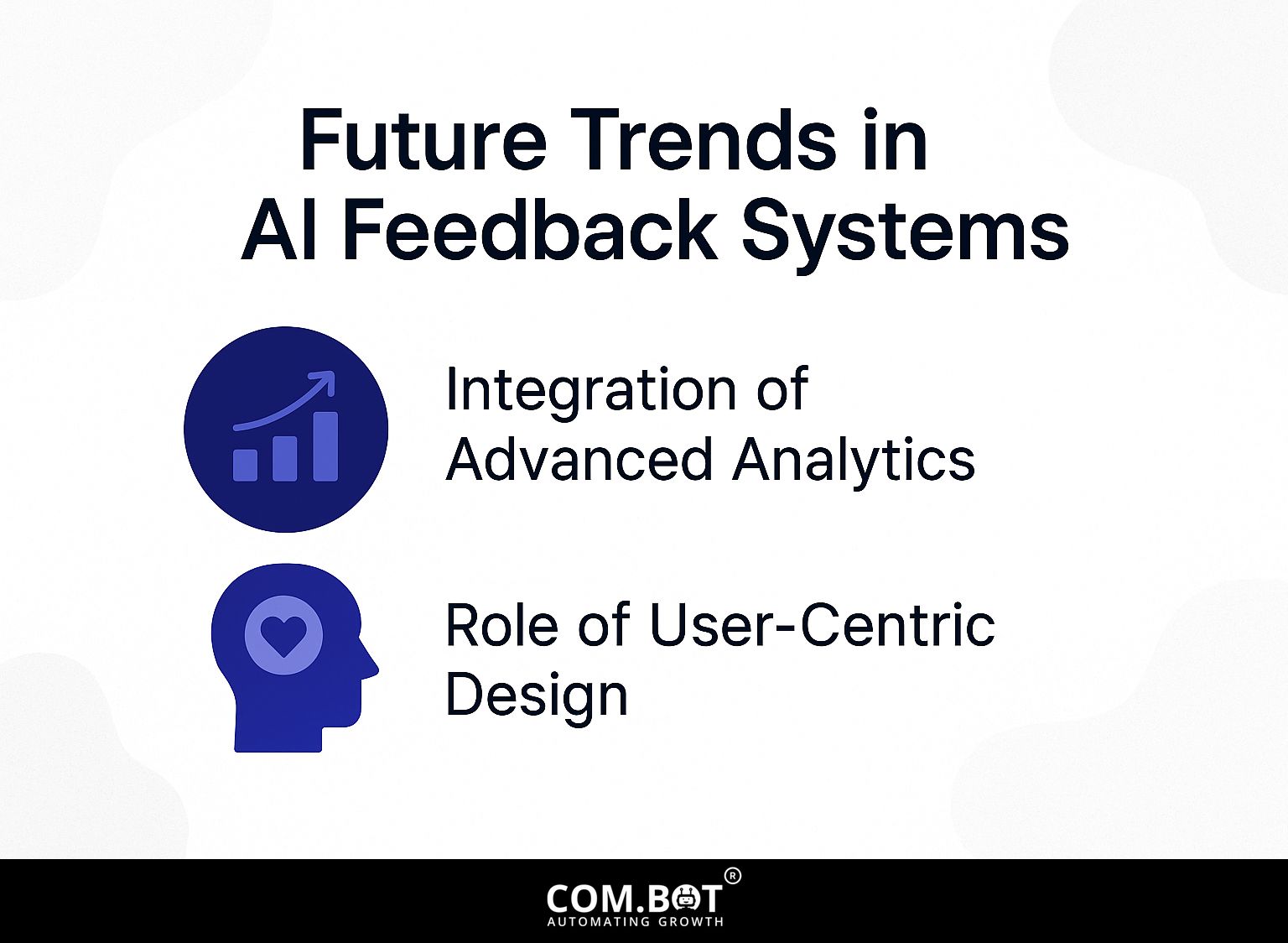
AI feedback systems will increasingly include sophisticated analysis and designs focused on users, leading to improved results. This approach aligns with the principles outlined in our analysis of Feedback for AI Systems: Importance and Improvement Techniques, detailing methods to enhance these systems further.
Integration of Advanced Analytics
Integrating advanced analytics allows AI systems to predict user behavior and tailor feedback mechanisms for greater relevance.
One effective method is utilizing tools like Google Analytics and Tableau to analyze user interactions and engagement metrics.
For example, by tracking click-through rates and session durations, AI can adjust its feedback in real-time. Using machine learning libraries like TensorFlow helps understand user preferences by analyzing past data.
By using these tools together, organizations can create feedback systems that respond quickly and proactively, ensuring users receive customized experiences that increase satisfaction and maintain their interest.
Role of User-Centric Design
Designs focused on users make feedback systems easy to use, increasing the chances that users will participate and provide useful information.
To build effective feedback systems, follow some key guidelines.
- Start with clear, concise instructions to guide users through the feedback process.
- Use different types like rating scales, open-ended questions, or multiple-choice options to suit different tastes.
- Make sure websites work well on phones, since a lot of people use them to go online.
- Offer immediate acknowledgment of feedback submissions, reinforcing the user’s contribution.
- Check feedback data often to spot patterns and find areas to improve; tools like SurveyMonkey or Typeform can make this task easier.
By focusing on user experience, you’ll create a more responsive and effective feedback setting.
Frequently Asked Questions
What is the importance of feedback for AI systems?
Feedback is important for AI systems because it helps them to keep learning and get better at what they do. Without feedback, AI systems wouldn’t be able to adjust to different conditions or predict accurately.
How does feedback improve AI systems?
Feedback helps AI systems find and fix mistakes, improve their methods, and make smarter choices. By consistently getting feedback, AI systems can be more accurate, efficient, and reliable.
Can human feedback be added to AI systems?
Yes, human input is an essential part of making AI systems better. By using input from people, AI can learn from human experience, choices, and habits to improve how they operate and make decisions.
What are some techniques for providing feedback to AI systems?
One technique is to use labeled data sets for training and testing AI models. Another approach is to use reinforcement learning, where the system receives feedback in the form of rewards or penalties based on its actions. Human feedback through surveys or ratings can also be used.
Why is it important to have a reliable feedback loop for AI systems?
A consistent feedback process helps AI systems improve and provide accurate results. Without a feedback loop, AI systems may become stagnant and fail to adjust to changes, leading to inaccurate or outdated predictions.
What are the potential consequences of not incorporating feedback in AI systems?
Without feedback, AI systems might keep making the same mistakes and giving wrong outputs. This can have serious consequences, such as incorrect decisions and predictions, biased outcomes, and negative impacts on businesses and society.
